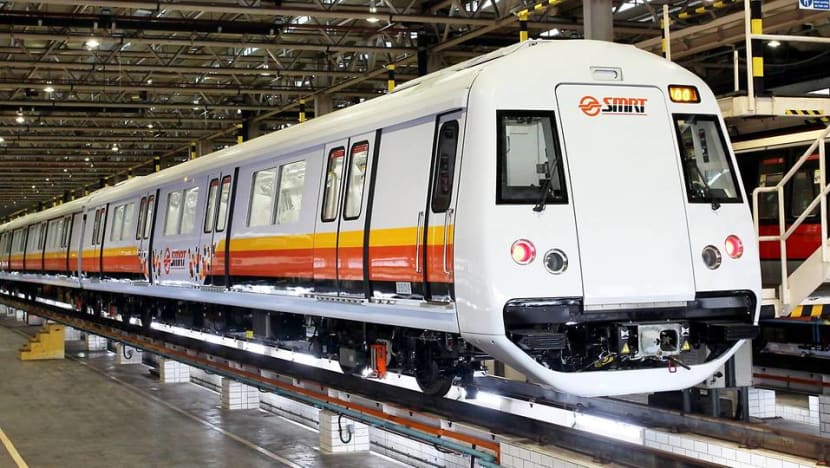Coroner notes SMRT's steps to prevent future incidents after worker killed by rod that shot out of machine

File photo of an SMRT train. (Photo: Facebook/SMRT)
SINGAPORE: A coroner has ruled that the death of an SMRT technical officer, who died after being struck by a rod that shot out of a machine at Bishan Depot, was an unfortunate misadventure.
Coroner Christopher Goh noted the steps that SMRT has since taken to prevent future reoccurrences, and said that such a scenario was not envisaged before.
Mr Muhammad Afiq Senawi, 30, was operating a hydraulic press machine in the rolling stock workshop, where trains and their components are maintained, when the incident occurred on Mar 23 last year.
He was assigned to the station with a work buddy and they took turns to operate the machine while the other person acted as an assistant.
Mr Afiq's buddy went first with no issue, and when Mr Afiq pressed on the piston of the machine, his buddy asked him to stop as he noticed that the device was moving very slowly.
He thought something was stuck or had gone awry, and Mr Afiq agreed, lifting up the piston slowly. His buddy looked away and heard the piston operating, followed by a loud "bang".
Mr Afiq was seen falling backwards and lying face up in front of the machine, gasping for air. A hole had been created in a fencing gate that was meant to keep people away from the machine, and a spacer rod that was initially inside the machine had been ejected.
Mr Afiq was seen with blood gushing out of his mouth, and he was taken to hospital, where doctors said that a 5kg object had flown into his face. The coroner's court later heard that the spacer rod weighed 2.86kg instead.
He died later that day from face and chest injuries. No foul play was found in his death.
MOM OFFICER TESTIFIES
An officer from the Ministry of Manpower (MOM) testified that the machine was manufactured in 2015 and is rated at 100 ton, which is the equivalent of an output of about 400 bars of maximum pressure.
Asked to quantify it, he said it was very difficult to make a comparison and said it is basically "very high pressure".
The hydraulic press machine was surrounded in the front by a metal fencing made of wire mesh that was meant to keep anyone from interfering with the operation zone of the machine, and to keep in any component that might fly out.
MOM's investigations revealed that when Mr Afiq placed a component into the machine and operated the piston, he and his buddy had forgotten to remove the old component that was still in the cavity. Because of the build-up of pressure, the spacer rod was ejected.
The MOM officer said both Mr Afiq and his partner had been properly trained to operate the machine, but certain details of operation processes were not in the work instructions.
Particularly, there was no instruction to ensure the cavity was empty before proceeding to the next step. While risk assessments had found that components might fly out - with fencing as the solution - SMRT did not anticipate that the spacer rod would be a strong projectile.
No such incident had occurred in the more than two decades since the work processes were put in place in the 1980s, he said.
After the incident, MOM issued a stop-work order and required SMRT to conduct a reassessment of the risks involved in the processes. The transport company came up with numerous steps to improve the related servicing processes.
The machine has been completely re-engineered, added the MOM officer. Simpler names were given to the machine parts, while there was a locking interface introduced for the piston and the centre hole. The bottom part of the machine now has windows so operators can make sure it is empty before proceeding.
There are now pressure valve regulators in the machines to allow only the appropriate pressure to be applied, he added.
The metal fence has also been redesigned and now covers both the front and the back of the machine, and a professional engineer was engaged to look into the ridigity of the fence and its ability to withstand a certain force.
The coroner said that while SMRT had safety measures in place, such a scenario did not seem to be envisaged. He said the company has "to their credit", taken steps to ensure such incidents are prevented in future.














